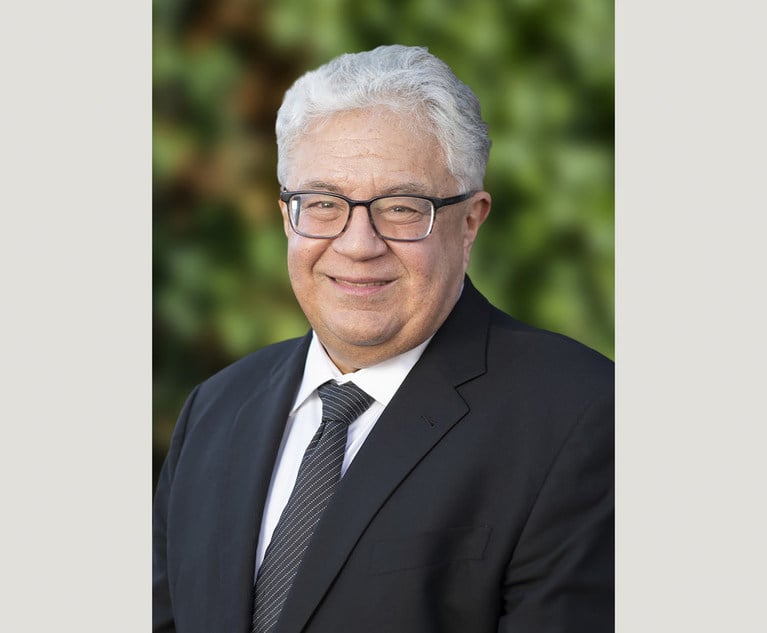 Vasilios J. Kalogredis, with Lamb McErlane. Courtesy photo.
Vasilios J. Kalogredis, with Lamb McErlane. Courtesy photo. US Worker Shortages and H-1B Visas in Health Care
Because of the various avenues available, foreign health care workers should keep abreast of the different visa types; advantages, disadvantages, and eligibility for each; and the processes and timelines involved.
January 22, 2024 at 09:04 AM
6 minute read
The current health care worker shortage in the United States is an ongoing nationwide problem that does not appear to be going away any time soon. The Association of American Medical Colleges projects a shortage of up to 124,000 physicians by 2034. While the insufficient supply of U.S. health care workers in only worsening, studies show that roughly 263,000 foreign national health care professionals in the United States are under- or unemployed. Accordingly, one strategy health care employers should consider, and prospective immigrant employees should leverage, is hiring international workers via employer-based immigration sponsorship. While several visa types allow for the hiring of international workers (e.g., J-1, H-1B, O-1, E-2, E-3, H-1B1, TN, and F-1 OPT/STEM OPT), this article will focus on H-1B visas.
Background
Through the H-1B program (the program), U.S. companies may employ foreign workers in occupations that require the theoretical and practical application of specialized knowledge and a bachelor's degree or higher in such specialty, or its equivalent. Though any position requiring a bachelor's degree or higher may qualify for the program, high-demand fields typically comprise of science, health care, engineering and information technology. The program provides 65,000 visas annually, with an additional 20,000 visas set aside exclusively for the advanced degree exemption (i.e., foreign workers who hold a U.S. master's or doctoral degree) (collectively referred to as the H-1B cap). The H-1B visa may be approved up to three times for a maximum of six years with an H-1B status. Because there are more applicants than available visas each year, the program operates through an electronic lottery system to determine which employers may sponsor specifically identified foreign nationals for H-1B status. The U.S. Citizenship and Immigration Services (USCIS) received 780,884 H-1B registrations for Fiscal Year (FY) 2024, representing a 61% increase over the FY 2023 filing season.
This content has been archived. It is available through our partners, LexisNexis® and Bloomberg Law.
To view this content, please continue to their sites.
Not a Lexis Subscriber?
Subscribe Now
Not a Bloomberg Law Subscriber?
Subscribe Now
NOT FOR REPRINT
© 2025 ALM Global, LLC, All Rights Reserved. Request academic re-use from www.copyright.com. All other uses, submit a request to [email protected]. For more information visit Asset & Logo Licensing.
You Might Like
View All


Longtime Reed Smith Health Care Partner Opts for Solo Practice Over Retirement
3 minute read
Hospital Must Provide Pre-Complaint Discovery in Privacy Breach Case, Pa. Judge Rules
4 minute readLaw Firms Mentioned
Trending Stories
Who Got The Work
J. Brugh Lower of Gibbons has entered an appearance for industrial equipment supplier Devco Corporation in a pending trademark infringement lawsuit. The suit, accusing the defendant of selling knock-off Graco products, was filed Dec. 18 in New Jersey District Court by Rivkin Radler on behalf of Graco Inc. and Graco Minnesota. The case, assigned to U.S. District Judge Zahid N. Quraishi, is 3:24-cv-11294, Graco Inc. et al v. Devco Corporation.
Who Got The Work
Rebecca Maller-Stein and Kent A. Yalowitz of Arnold & Porter Kaye Scholer have entered their appearances for Hanaco Venture Capital and its executives, Lior Prosor and David Frankel, in a pending securities lawsuit. The action, filed on Dec. 24 in New York Southern District Court by Zell, Aron & Co. on behalf of Goldeneye Advisors, accuses the defendants of negligently and fraudulently managing the plaintiff's $1 million investment. The case, assigned to U.S. District Judge Vernon S. Broderick, is 1:24-cv-09918, Goldeneye Advisors, LLC v. Hanaco Venture Capital, Ltd. et al.
Who Got The Work
Attorneys from A&O Shearman has stepped in as defense counsel for Toronto-Dominion Bank and other defendants in a pending securities class action. The suit, filed Dec. 11 in New York Southern District Court by Bleichmar Fonti & Auld, accuses the defendants of concealing the bank's 'pervasive' deficiencies in regards to its compliance with the Bank Secrecy Act and the quality of its anti-money laundering controls. The case, assigned to U.S. District Judge Arun Subramanian, is 1:24-cv-09445, Gonzalez v. The Toronto-Dominion Bank et al.
Who Got The Work
Crown Castle International, a Pennsylvania company providing shared communications infrastructure, has turned to Luke D. Wolf of Gordon Rees Scully Mansukhani to fend off a pending breach-of-contract lawsuit. The court action, filed Nov. 25 in Michigan Eastern District Court by Hooper Hathaway PC on behalf of The Town Residences LLC, accuses Crown Castle of failing to transfer approximately $30,000 in utility payments from T-Mobile in breach of a roof-top lease and assignment agreement. The case, assigned to U.S. District Judge Susan K. Declercq, is 2:24-cv-13131, The Town Residences LLC v. T-Mobile US, Inc. et al.
Who Got The Work
Wilfred P. Coronato and Daniel M. Schwartz of McCarter & English have stepped in as defense counsel to Electrolux Home Products Inc. in a pending product liability lawsuit. The court action, filed Nov. 26 in New York Eastern District Court by Poulos Lopiccolo PC and Nagel Rice LLP on behalf of David Stern, alleges that the defendant's refrigerators’ drawers and shelving repeatedly break and fall apart within months after purchase. The case, assigned to U.S. District Judge Joan M. Azrack, is 2:24-cv-08204, Stern v. Electrolux Home Products, Inc.
Featured Firms
Law Offices of Gary Martin Hays & Associates, P.C.
(470) 294-1674
Law Offices of Mark E. Salomone
(857) 444-6468
Smith & Hassler
(713) 739-1250





